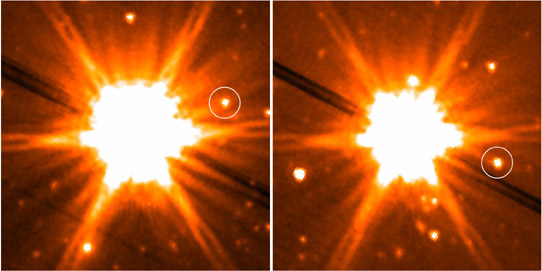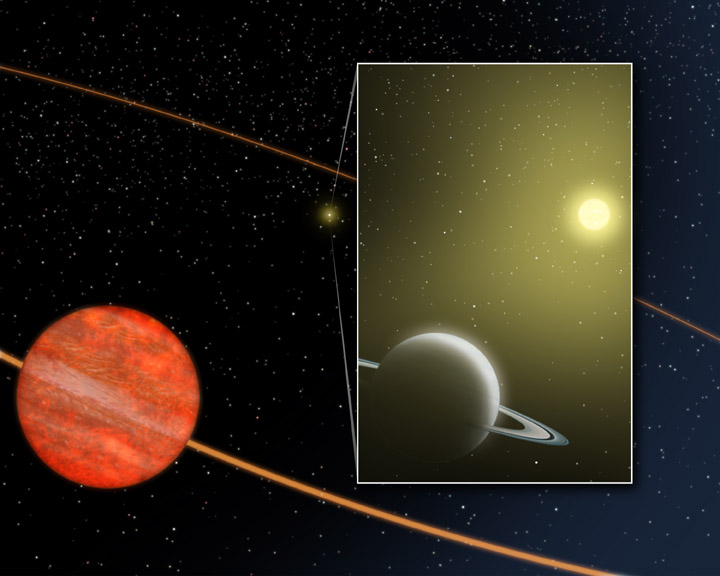Image List
-

Using infrared photographs obtained with NASA's Spitzer Space Telescope, astronomers have discovered two very cold brown dwarfs orbiting the stars HD 3651 (left) and HN Peg (right). These brown dwarfs have masses of only 20 and 50 times the mass of Jupiter and have orbits that are more than 10 times larger than Pluto's orbit. HD 3651 and HN Peg are in the Sun's neighborhood of the Galaxy, with distances of only 36 and 60 light years from the Sun.
NASA / JPL-Caltech / K. Luhman (Penn State University) / B. Patten (Harvard-Smithsonian CfA) -

This is an artist's concept of the star HD 3651 as it is orbited by a close-in Saturn-mass planetary companion and the distant brown dwarf companion discovered by Spitzer infrared photographs. The Saturn-mass planet was discovered through Doppler observations in 2003. Its orbit is very small, the size of Mercury's, and is highly elliptical. The gravity of the distant brown dwarf companion may be reponsible for the distorted shape of the inner planet's orbit.
NASA / JPL-Caltech / T. Pyle (SSC)